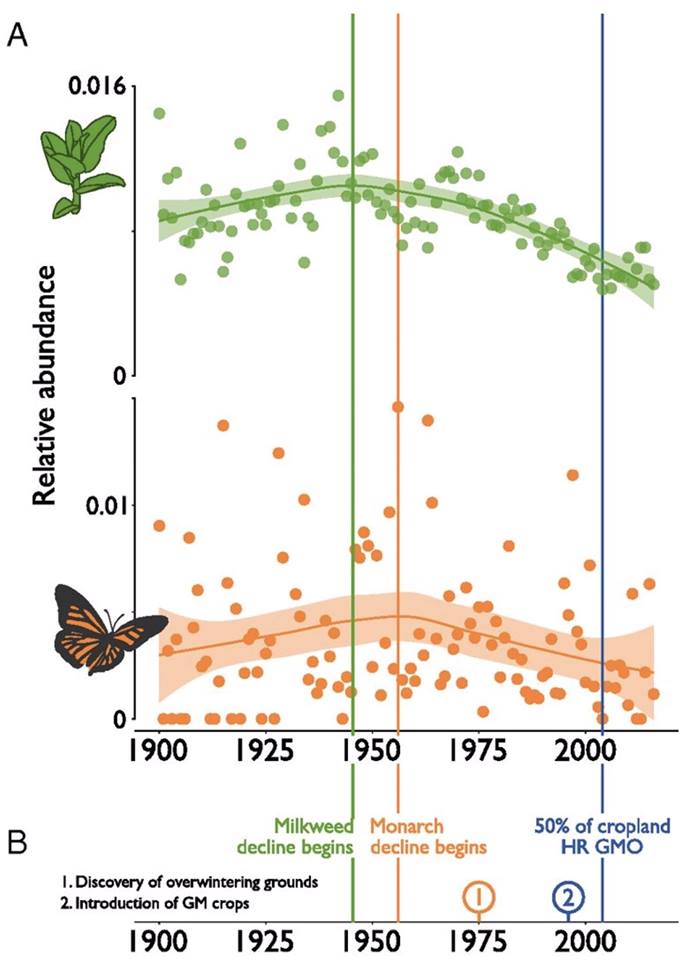NATIVE East of the Rockies MILKWEEDS FOR MONARCHS
Our director, Helen Yoest, has grown a lot of different milkweeds in her home garden she calls, The Bee Better Teaching Garden. Some milkweeds are more successful in attracting adult monarch butterflies to lay her eggs than others types. And the very best and most widely available, is the non-native tropical milkweed, Asclepias curassavica. This non-native has brought with it controversy as to its use. Keep reading. You can help!
WHAT HAPPENED?
The monarch butterfly population in North America is down by 90% in just the last 20 years. One of the biggest factors in monarch decline is the increasing scarcity of the monarch’s host plant, milkweed, Asclepias spp.
We humans have a tendency to want to point to an accuser, even though there are often many factors to any problem. In this case the accuser is Big AG. Their crime? Using genetically modified organisms (GMOs) or in other words, seeds or crops.
How GMO Seed Works. GMO seeds are seeds that have been modified for specific traits. In the case of corn grown throughout the midwest, GMO corn seed is resistant to Roundup and can be used on corn crops to control weeds, and not affect the corn plants.
These weeds, in a large part, are milkweed. Without milkweed, monarchs can’t successfully reproduce and the species declines. By planting milkweed in your own garden, landscape, and throughout your community, you can help reverse this decline of monarchs, at least in a small way, and by doing so, you become a part of a bigger group helping!
There is no doubt GMO seed use contributed to the decline in milkweed populations, but there is scientific evidence to show monarch butterfly and milkweed declines significantly predate the use of genetically modified crops.
We believe there are many factors attributed to this decline including sprawling urbanization, loss of native grasslands, as well as droughts and deluges. . Our focus should not be on the past, but rather to the future and what WE can do now.



